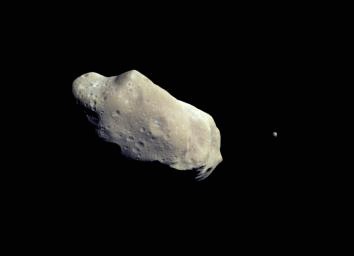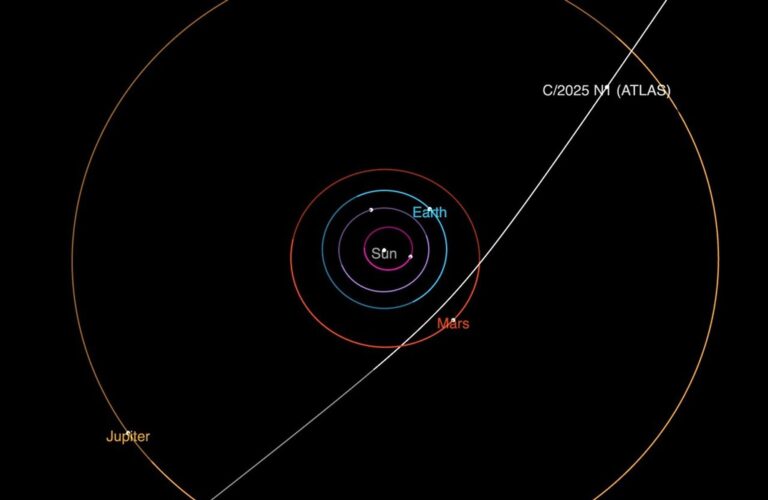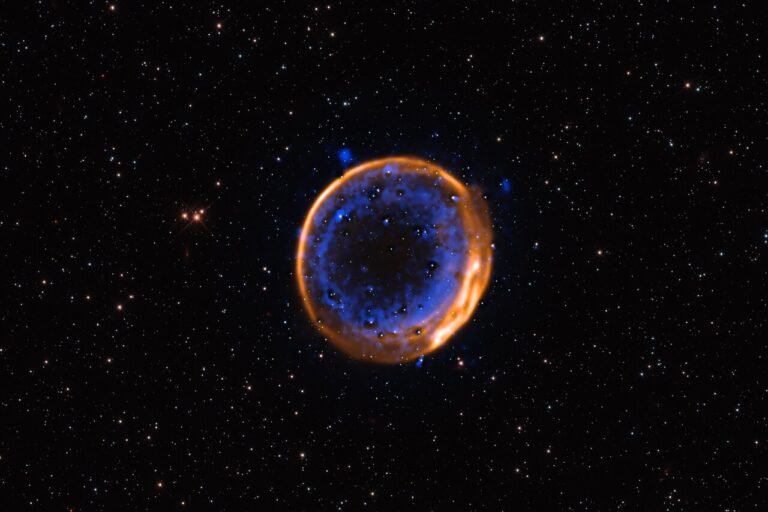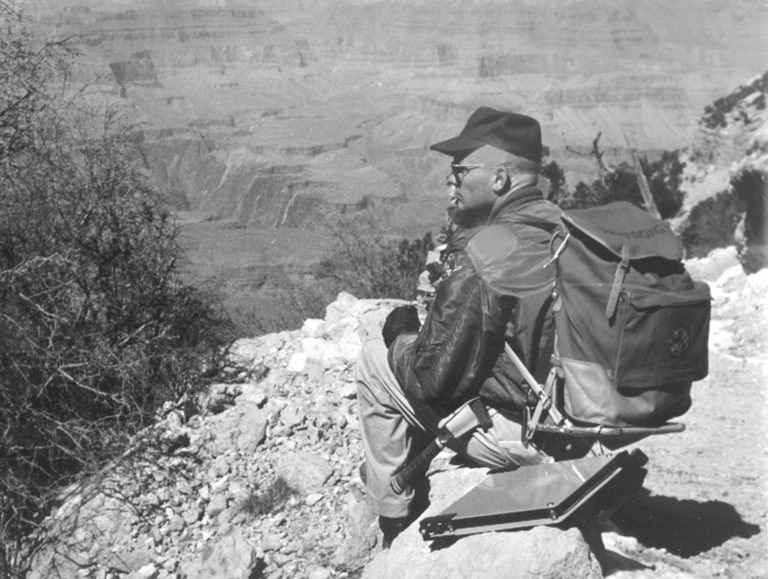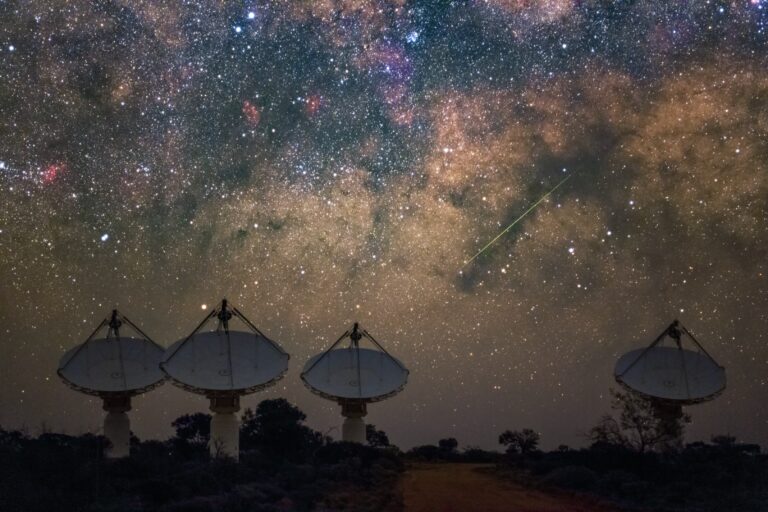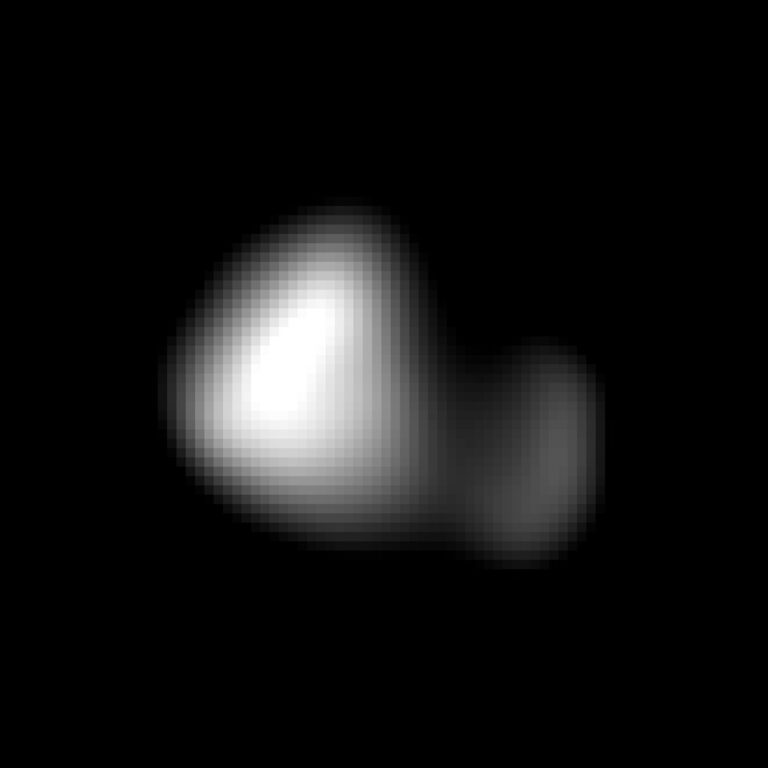Key Takeaways:
Immediately after the Ida encounter, we jailbarred the high-resolution mosaic of Ida. A few minutes before closest approach, Galileo took 30 frames to cover enough area to be sure it would capture all of Ida. The jailbar images revealed Ida in 5 of those 30 frames. It took a month to play them back. For the next 4 or 5 months, the downlink performance dropped too low for playback to continue.
Herb Breneman, Catherine Heffernan (fellow assistant science coordinators under Ken Klaasen on the Solid State Imager team), and I locked ourselves in this dark little closet that had an imaging machine, and we called up the image to take a look. It was important to be secretive about these things so information didn’t leak to the press before it was properly blessed by the imaging team. That was frustrating, because I always wanted to show the engineers and sequence-team people.
When the image came up, Ida was big in the field of view and had about 10 jailbars passing through it. Because the jailbars consisted of 3 lines out of every 20 or so, there were only 3 lit lines for every 17 or so dark lines. For one of those jailbar sets that passed near the center of Ida, 2 of the 3 lines were missing, leaving only one lit line on Ida. It was immediately obvious that, off the asteroid’s bright limb, there were 15 lit pixels of something or other sitting in that single jailbar line.
My first words were something like “What is that?!” The light emanating from the screen of those 15 pixels showed Dactyl, and it had struck my eyes about a nanosecond before it fell into Catherine’s and Herb’s.
We immediately began to investigate. It was clear the little thing had what looked like a sharp, bright limb located, where it should be, on the sunward side, and what looked like a trailing off terminator on the other side. There was no question that if the data were not garbled, this was a little object that had the same approximate albedo (surface brightness) as Ida.
It’s hard to recall, but I think it took about 3 weeks before the ground-system folks found the two missing jailbar lines and confirmed Dactyl. We weren’t allowed to tell anyone about it. I couldn’t keep my mouth shut, and must have told half a dozen people outside the team, swearing them all to secrecy. Later on, we got the full playback of that image and saw the whole little bugger.
But this was just the start of the fun. That image was taken about 10 minutes before closest approach, when Dactyl was still quite small. Once the object was confirmed, the questions started to fly. Is it in orbit? Where is it relative to Ida? Might it be in the highest-resolution images?
Ken Klaasen went off and, with his pencil, a straight edge, and calculator, did some triangulation to determine if the little object might be in one or more of the high-resolution mosaics. His calculations predicted there was a good chance it could be in the 30-frame, high-resolution mosaic that had the best full-frame image of Ida. This was the one we had jailbarred right after closest approach.
In the meantime, images of Dactyl — not yet named, by the way — were rolling in slowly during the playback of Galileo’s approach images. By sheer luck, Dactyl was positioned horizontally to Ida, meaning that every playback scheduled of Ida would also return Dactyl without having to return any additional data. We got a picture of Dactyl in every approach image played back.
When the jailbar sequence for the high-resolution mosaic finally executed and had been played back, we were once again sitting in our dark little closet. This time, it was just Ken and me. Up came the pictures, one after another. All of a sudden, there it was: a little bright object straddling two jailbar lines. We were so happy. I’ve never seen Ken so excited. We went into the hallway and were literally holding hands, jumping up and down like two little kids, laughing and squealing. By then, we didn’t have to hide anything.
So, that’s the story of Dactyl. It was a heck of a lot of fun. In my mind. it rivaled Voyager 2’s first blue images of Neptune that I thought nothing would beat. And then I thought the same thing after Ida and Dactyl, until NEAR-Shoemaker arrived at the near-Earth asteroid Eros. There’s nothing like being on the front lines of discovery.
At some point during the playback, Mike told me the imaging team was conferring upon me the honor of being the discoverer of Dactyl. That was cool, although I think Lisa technically saw it first. I took it as a gift from the team for those 2 years of planning the encounter, and the three-quarters of a year shepherding that painfully slow playback at 10 bits per second.
Immediately after the Ida encounter, we jailbarred the high-resolution mosaic of Ida. A few minutes before closest approach, Galileo took 30 frames to cover enough area to be sure it would capture all of Ida. The jailbar images revealed Ida in 5 of those 30 frames. It took a month to play them back. For the next 4 or 5 months, the downlink performance dropped too low for playback to continue.
Herb Breneman, Catherine Heffernan (fellow assistant science coordinators under Ken Klaasen on the Solid State Imager team), and I locked ourselves in this dark little closet that had an imaging machine, and we called up the image to take a look. It was important to be secretive about these things so information didn’t leak to the press before it was properly blessed by the imaging team. That was frustrating, because I always wanted to show the engineers and sequence-team people.
When the image came up, Ida was big in the field of view and had about 10 jailbars passing through it. Because the jailbars consisted of 3 lines out of every 20 or so, there were only 3 lit lines for every 17 or so dark lines. For one of those jailbar sets that passed near the center of Ida, 2 of the 3 lines were missing, leaving only one lit line on Ida. It was immediately obvious that, off the asteroid’s bright limb, there were 15 lit pixels of something or other sitting in that single jailbar line.
My first words were something like “What is that?!” The light emanating from the screen of those 15 pixels showed Dactyl, and it had struck my eyes about a nanosecond before it fell into Catherine’s and Herb’s.
We immediately began to investigate. It was clear the little thing had what looked like a sharp, bright limb located, where it should be, on the sunward side, and what looked like a trailing off terminator on the other side. There was no question that if the data were not garbled, this was a little object that had the same approximate albedo (surface brightness) as Ida.
It’s hard to recall, but I think it took about 3 weeks before the ground-system folks found the two missing jailbar lines and confirmed Dactyl. We weren’t allowed to tell anyone about it. I couldn’t keep my mouth shut, and must have told half a dozen people outside the team, swearing them all to secrecy. Later on, we got the full playback of that image and saw the whole little bugger.
But this was just the start of the fun. That image was taken about 10 minutes before closest approach, when Dactyl was still quite small. Once the object was confirmed, the questions started to fly. Is it in orbit? Where is it relative to Ida? Might it be in the highest-resolution images?
Ken Klaasen went off and, with his pencil, a straight edge, and calculator, did some triangulation to determine if the little object might be in one or more of the high-resolution mosaics. His calculations predicted there was a good chance it could be in the 30-frame, high-resolution mosaic that had the best full-frame image of Ida. This was the one we had jailbarred right after closest approach.
In the meantime, images of Dactyl — not yet named, by the way — were rolling in slowly during the playback of Galileo’s approach images. By sheer luck, Dactyl was positioned horizontally to Ida, meaning that every playback scheduled of Ida would also return Dactyl without having to return any additional data. We got a picture of Dactyl in every approach image played back.
When the jailbar sequence for the high-resolution mosaic finally executed and had been played back, we were once again sitting in our dark little closet. This time, it was just Ken and me. Up came the pictures, one after another. All of a sudden, there it was: a little bright object straddling two jailbar lines. We were so happy. I’ve never seen Ken so excited. We went into the hallway and were literally holding hands, jumping up and down like two little kids, laughing and squealing. By then, we didn’t have to hide anything.
So, that’s the story of Dactyl. It was a heck of a lot of fun. In my mind. it rivaled Voyager 2’s first blue images of Neptune that I thought nothing would beat. And then I thought the same thing after Ida and Dactyl, until NEAR-Shoemaker arrived at the near-Earth asteroid Eros. There’s nothing like being on the front lines of discovery.
At some point during the playback, Mike told me the imaging team was conferring upon me the honor of being the discoverer of Dactyl. That was cool, although I think Lisa technically saw it first. I took it as a gift from the team for those 2 years of planning the encounter, and the three-quarters of a year shepherding that painfully slow playback at 10 bits per second.

